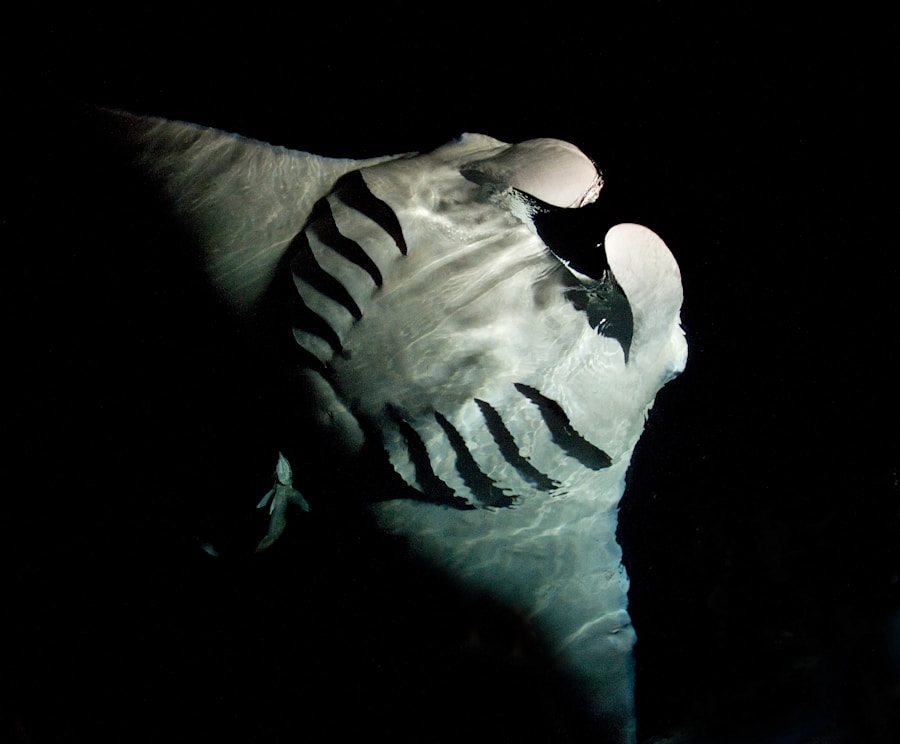Download links
How to install The Mysterious World of the Angler Fish APK?
1. Tap the downloaded The Mysterious World of the Angler Fish APK file.
2. Touch install.
3. Follow the steps on the screen.
Description
The angler fish, a fascinating and often misunderstood creature of the deep sea, has captured the imagination of scientists and the public alike. Found primarily in the dark depths of the ocean, these fish are renowned for their unique appearance and remarkable adaptations that allow them to thrive in one of the most inhospitable environments on Earth. With over 200 species identified, angler fish exhibit a range of sizes, colors, and behaviors, making them a subject of interest for marine biologists and enthusiasts.
Their most distinctive feature is the bioluminescent lure that protrudes from their heads, which they use to attract prey in the pitch-black waters of the deep sea. Angler fish inhabit various oceanic regions, from the continental shelf to the abyssal depths, showcasing their adaptability to different marine environments. They are primarily found in temperate and tropical waters, but some species have been discovered in the frigid depths of the Arctic and Antarctic oceans.
The angler fish’s ability to survive in such extreme conditions is a testament to its evolutionary success. As researchers continue to explore the mysteries of the deep sea, the angler fish remains a symbol of the unknown, representing both the beauty and strangeness of life beneath the waves.
Key Takeaways
- The angler fish is a deep-sea predator known for its bioluminescent lure and large mouth filled with sharp teeth.
- Unique adaptations of the angler fish include its ability to survive in extreme depths, its bioluminescent lure, and its parasitic mating habits.
- Angler fish have a unique mating habit where the male fuses to the female, becoming a permanent parasite.
- There are over 200 species of angler fish, each with its own unique adaptations and characteristics.
- Angler fish have been featured in mythology and popular culture, often depicted as mysterious and terrifying creatures of the deep.
- Conservation efforts for angler fish are important due to the threats they face from deep-sea fishing and habitat destruction.
The Unique Adaptations of the Angler Fish
Attracting Prey in the Dark Depths
In the dark depths where sunlight cannot penetrate, the bioluminescent lure is crucial for survival. The glow of the lure mimics the appearance of smaller fish or other organisms, drawing in potential meals that are then swiftly captured by the angler fish’s large mouth filled with sharp teeth.
Enhanced Predatory Skills
In addition to their lures, angler fish possess other adaptations that enhance their predatory skills. Their bodies are often flattened and elongated, allowing them to navigate through tight spaces in rocky crevices or among coral reefs. Many species have developed a highly expandable stomach that enables them to consume prey much larger than themselves.
Camouflage and Survival
Furthermore, their dark coloration helps them blend into their surroundings, providing camouflage from both predators and prey. This adaptation is particularly advantageous in an environment where food can be scarce; by being able to eat large meals when available, angler fish can sustain themselves for extended periods without needing to hunt frequently.
The Mating Habits of Angler Fish

The mating habits of angler fish are as peculiar as their physical characteristics. In many species, sexual dimorphism is pronounced; females are significantly larger than males. This size difference plays a crucial role in their reproductive strategy.
Males are often much smaller and have evolved a unique method of reproduction that involves parasitism. When a male encounters a female, he latches onto her body with his sharp teeth and eventually fuses with her, becoming a permanent reproductive partner. This fusion allows the male to access nutrients from the female while providing her with sperm whenever she is ready to spawn.
This unusual reproductive strategy raises intriguing questions about the evolutionary pressures that have shaped angler fish behavior. The male’s reliance on the female for sustenance may seem extreme, but it ensures that he is always available for mating when conditions are right. In some species, females can carry multiple males simultaneously, each contributing to her reproductive output.
This strategy maximizes genetic diversity among offspring while ensuring that females can produce eggs even in environments where finding a mate is challenging due to low population densities.
The Diversity of Angler Fish Species
| Family | Number of Species |
|---|---|
| Lophiidae | 11 |
| Oneirodidae | 42 |
| Linophrynidae | 7 |
| Centrophrynidae | 1 |
| Ceratiidae | 3 |
The diversity among angler fish species is staggering, with variations in size, habitat preference, and hunting techniques. While many people may envision a single type of angler fish, there are over 200 recognized species within the order Lophiiformes. These species can be broadly categorized into two groups: deep-sea angler fish and those found in shallower waters.
Deep-sea angler fish tend to exhibit more pronounced bioluminescent features and larger mouths compared to their shallow-water counterparts. Among the most well-known species is the common angler fish (Lophius piscatorius), which inhabits the North Atlantic Ocean and is often sought after for its culinary value. In contrast, species like the deep-sea angler fish (Melanocetus johnsonii) are characterized by their grotesque appearance and extreme adaptations for life in total darkness.
These deep-sea varieties often have oversized mouths and bodies that can stretch to accommodate large prey. The diversity in angler fish not only highlights their adaptability but also reflects the myriad ecological niches they occupy within marine ecosystems.
The Role of Angler Fish in Mythology and Popular Culture
Angler fish have made their mark not only in scientific literature but also in mythology and popular culture. Their eerie appearance has inspired various myths and stories throughout history. In some cultures, they are seen as symbols of danger lurking beneath the surface, embodying fears associated with the unknown depths of the ocean.
Their bioluminescent lures have been likened to sirens or other mythical creatures that use beauty to ensnare unsuspecting victims. In contemporary popular culture, angler fish have appeared in films, documentaries, and literature, often depicted as monstrous creatures of the deep. Their unique characteristics have made them a favorite subject for filmmakers looking to evoke a sense of wonder or fear associated with oceanic exploration.
Documentaries like “Blue Planet” have showcased these fascinating creatures, highlighting their adaptations and behaviors while educating viewers about the importance of marine biodiversity.
Conservation Efforts for Angler Fish

Conservation Efforts
To protect angler fish, conservation efforts involve a combination of research, regulation, and habitat preservation. Marine protected areas (MPAs) have been established in various regions to safeguard critical habitats from destructive fishing practices and pollution. Scientists are also working to better understand angler fish populations through studies on their distribution, reproductive habits, and ecological roles within marine ecosystems.
Raising Awareness and Advocating for Change
By raising awareness about these unique creatures and advocating for responsible fishing practices, conservationists hope to ensure that future generations can appreciate the wonders of angler fish and their contributions to ocean health. It is essential to recognize the importance of protecting angler fish habitats to maintain the delicate balance of marine ecosystems worldwide.
The Importance of Protecting Angler Fish Habitats
As we continue to explore and understand these enigmatic creatures, it becomes increasingly clear that protecting their habitats is essential for maintaining the health of our oceans. Angler fish represent one of nature’s most extraordinary adaptations to life in extreme environments, and their unique features, mating habits, diversity among species, cultural significance, and ongoing conservation challenges highlight both their ecological importance and vulnerability in an ever-changing world.
If you’re interested in learning more about online fishing, you should check out this article on mastering the art of online fishing with Taya365. It provides valuable tips and insights on how to improve your online fishing skills. Additionally, Taya365 is highlighted as the ultimate online fishing destination in another article here. These articles offer a wealth of information for anglers looking to enhance their fishing experience.
FAQs
What is an angler fish?
An angler fish is a deep-sea fish known for its unique appearance and hunting method. It has a large head, a wide mouth, and a long dorsal spine with a bioluminescent lure at the end.
Where do angler fish live?
Angler fish are found in the deep waters of the Atlantic and Antarctic oceans, as well as in the waters around Australia and New Zealand. They typically live at depths of 200 to 2,000 meters.
How do angler fish catch their prey?
Angler fish use a bioluminescent lure attached to their dorsal spine to attract prey. When a smaller fish or crustacean approaches the lure, the angler fish quickly snaps its mouth shut, capturing the unsuspecting prey.
What do angler fish eat?
Angler fish primarily feed on small fish, shrimp, and other crustaceans. They are opportunistic feeders and will eat whatever prey is available in their deep-sea habitat.
Are angler fish dangerous to humans?
While angler fish are not typically dangerous to humans, they have been known to bite when handled. Their sharp teeth and powerful jaws can cause injury, and some species also have venomous spines.
How do angler fish reproduce?
Angler fish have a unique mating behavior where the much smaller male fuses to the body of the larger female. The male then becomes a permanent parasite, providing sperm to the female whenever she is ready to spawn. This phenomenon is known as sexual parasitism.





